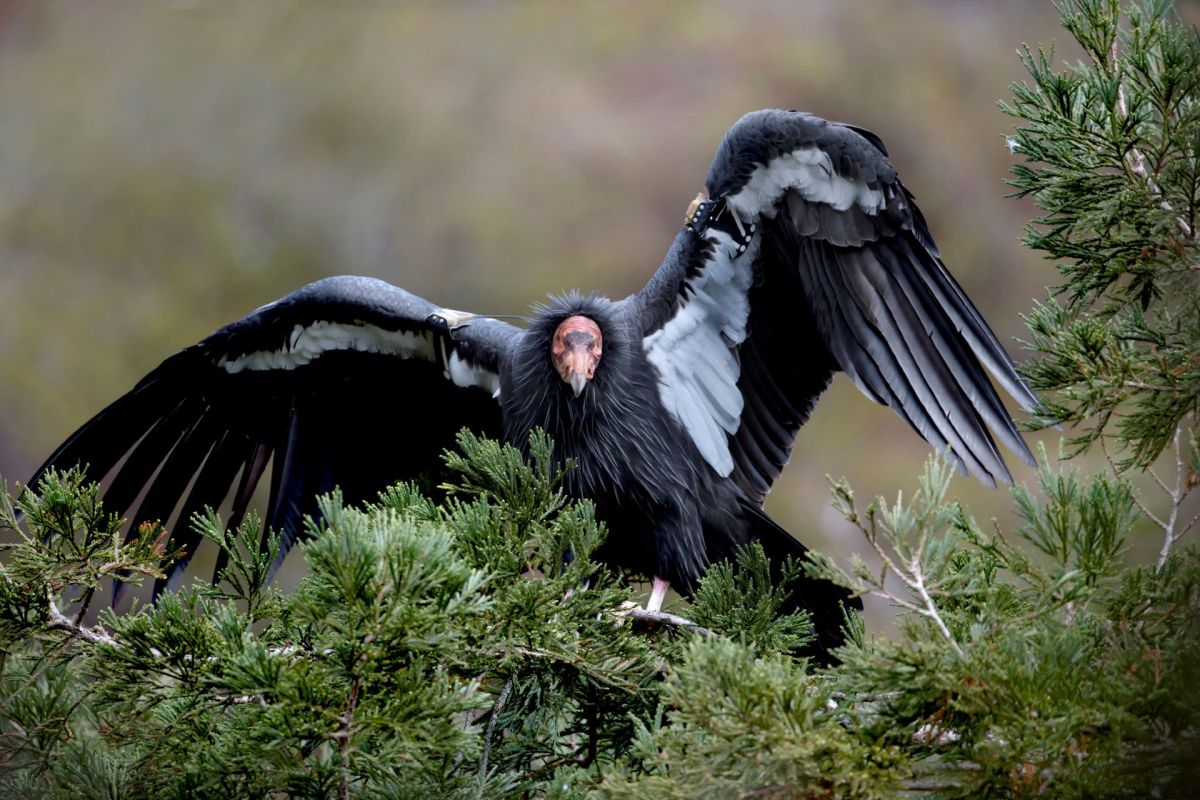The revival of North America's largest flying bird has sparked hope for conservationists, who have rescued the species from the brink of extinction.
With a wingspan of nine-and-a-half feet and a weight of up to 25 pounds, the California condor is a bewitching sight as it sweeps across southern California's mountains.
But only 40 years ago, the species looked certain to die out. In 1982, conservationists counted just 22 condors left living in the wild.
This was partially due to a natural population slump, which began 10,000 years ago. When animals like giant ground sloths, mastodons, and saber tooth cats started to disappear during the Pleistocene extinction, the condor lost a vital food source.
It retreated to the Pacific coast of North America, between British Columbia and Baja California, where it fell victim to shooting, egg collecting, and habitat loss.
Even when they weren't hunted themselves, the cyanide traps and lead bullets used to catch coyotes and bears poisoned any bird that fed off the carrion. Lead poisoning is responsible for as much as half of all condor deaths in the wild.
Stay warm all winter long with the Apple of intelligent space heaters Kelvin is the Apple of space heaters, designed for energy efficiency and maximum comfort. It's completely silent and intelligently controlled, with setup taking just 5 minutes. Built from premium materials like aluminum and glass, Kelvin works beautifully as a full-home heating system or as the perfect solution for that one room that never feels warm enough. |
By the 1930s, California was the last stronghold of the dwindling condor. With extinction looming, the U.S. Fish and Wildlife Service led an effort in 1987 to capture all the remaining condors in the wild and enter them into a captive breeding program.
Condors can't reproduce until they are at least six years old and then do so only every one or two years. To speed up the repopulation process, eggs were removed from their parents, which encouraged more egg-laying.
The condor's population has bounced back dramatically. Today, 300 condors fly free in North America.
To ensure that the condor continues to flourish, the program aims to have two populations living in separate habitats, with 150 breeding pairs in each. A third group will remain in captivity.
TCD Picks » Upway Spotlight
💡Upway makes it easy to find discounts of up to 60% on premium e-bike brands
Legislation introduced by California in 2019 banned the use of lead bullets, which could help to protect the bird further.
The Interdisciplinary Center for Conservation Science (ICSS) credited the condor's recovery to rigorous conservation. It predicted significant population regrowth by the end of the century if such efforts are allowed to continue unhindered.
"If we can stabilize the population, we're talking about someday downlisting the birds from endangered to threatened," Joe Burnett, program manager for the California Condor Recovery Program, told Smithsonian. "The ultimate goal is to delist them completely, like the bald eagle in 2007."
"Extinction risk, which we've used to measure conservation progress for decades, is a very absolute thing. A species is either at risk of extinction or it's not. Recovery, however, is relative," Molly Grace, a University of Oxford researcher, told The Guardian.
Join our free newsletter for cool news and cool tips that make it easy to help yourself while helping the planet.















